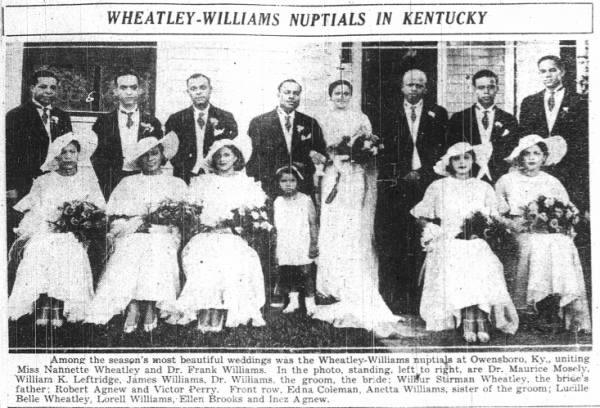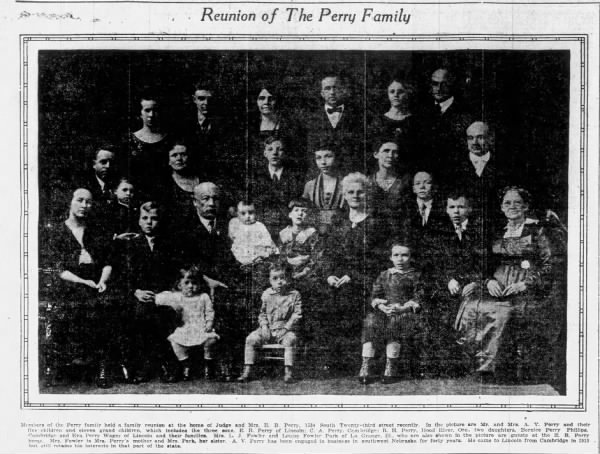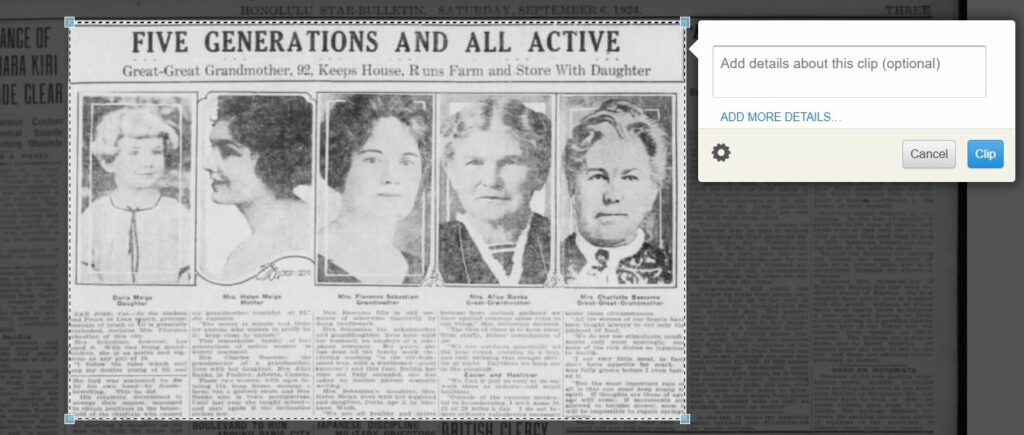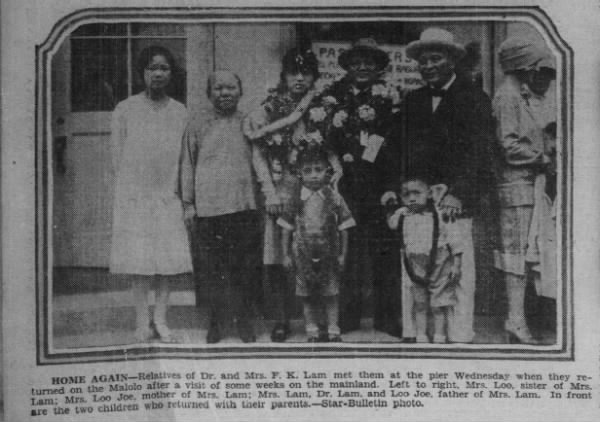 14 Jul 1934, Sat The Pittsburgh Courier (Pittsburgh, Pennsylvania) Newspapers.com
14 Jul 1934, Sat The Pittsburgh Courier (Pittsburgh, Pennsylvania) Newspapers.com
Newspapers can be an incredible resource for family history research. Not only do they have birth, marriage, and death announcements, but they are a valuable source of stories, photos, and more.
If you’re just learning how to use newspapers to do family history research, we’ve come up with a step-by-step guide to help you get started. This guide will help you organize your research before, during, and after your newspaper search!
(Our guide is meant to provide general suggestions to help you organize your newspaper family history research. Be sure to personalize our advice to fit your own research needs. And for help learning about Newspapers.com™ site basics, visit our Help Center.)
Before you get started: Pick one ancestor to research at a time.
We recommend researching just one person at a time to help focus your research and minimize distractions. You will often need to try a variety of newspaper searches to find the ancestor you’re looking for; and when you stick to one person, it becomes easier to keep track of potential searches you want to try.
Tip: If you discover information about another ancestor while researching your focus person, be sure to clip or save that newspaper article and make a note to come back to it when you have time to research that other ancestor.
Step 1. Write down what you already know about your ancestor.
Write down the things you already know about your ancestor. Gathering the known facts will allow you to narrow your newspaper search and help you differentiate your ancestor from other people who have the same name. For example, if you already know your ancestor was born in 1880, you can filter out newspaper matches for their name in the years before their birth, making the number of search results more manageable.
 23 Jan 1921, Sun The Nebraska State Journal (Lincoln, Nebraska) Newspapers.com
23 Jan 1921, Sun The Nebraska State Journal (Lincoln, Nebraska) Newspapers.com
Facts to write down before you start newspaper research (if you know them) include:
- The person’s full name and any known nicknames
- Important dates in their life (birth, marriage, death, military service, immigration)
- Names of close family members or other key individuals in the ancestor’s life
- Locations they lived (you’d be surprised by how many discoveries are made by searching an address!)
Step 2. Consider what you want to learn about your ancestor.
Setting goals and objectives is often helpful in family history research. So before you start searching newspapers, consider what you want to learn about your ancestor. Is their birthdate a mystery? Are you not sure of their father’s name? Is there a family story you’ve always heard and want to substantiate?
Clarifying what you want to find out will help you decide the best way to set up your newspaper search. For example, if your goal is to find your ancestor’s marriage date, you may want to start by searching for a marriage announcement in the Newspapers.com Marriage Index collection.
Examples of things you may want to learn:
- Dates of important life events
- Locations of important life events
- Names of your ancestor or their parents/siblings/etc.
- Life stories and anecdotes
- The general history of the time and place they were living
Step 3. Choose strategies for how you plan to learn about your ancestor.
Now that you know what you want to learn about your ancestor from newspapers, it’s time to plan how you’re going to find it. This includes thinking about things like which specific newspapers or cities you want to search in first. Though you may need to adjust your strategy as you go along, starting out with a plan in mind will help provide structure and organization to your research.
In forming your research strategy, consider things like:
- In which geographic locations am I most likely to find newspaper mentions of my ancestor? (e.g., cities, counties, states, countries)
- Am I aware of a local newspaper that my ancestor is likely to be mentioned in?
- What year range am I most likely to find my ancestor mentioned in?
- What are alternative search terms I might need to try if my first search doesn’t work? (E.g., what are nicknames, alternative spellings, or name abbreviations that my ancestor might be mentioned under?)
LEARN MORE: Tips for searching with name and spelling variations in newspapers
Tip: Keep in mind that people can be mentioned in newspapers in locations you’d never expect and from years long after their deaths. For instance, one young woman was born in West Virginia and died in Idaho in 1893. But her marriage announcement appeared in a Pennsylvania newspaper! Her parents had lived in Pennsylvania before their deaths, and a paper there published news of her engagement.
Step 4. Document (and clip!) what you are learning from your newspaper search.
Once you begin finding newspaper mentions about you ancestor, be sure to document what you’ve learned! It would be frustrating to discover something about your ancestor, only to forget the specifics later because you didn’t document your discovery!
When researching on Newspapers.com, one easy way to document your discoveries is through our clipping tool. If you think you might want to refer to a newspaper article in the future—clip it! Even experienced newspaper researchers sometimes come across a discovery, fail to clip it, and then can’t find it again. (If you find yourself in this situation, you can select “Recently Viewed” in the dropdown box below your username to see the last few newspaper pages you viewed).

You can view all your clippings on your Clippings page (accessible under the “Clippings” tab at the top of our site, or by clicking your username and selecting “My Clippings” from the dropdown box). And if you title your clippings—which we always recommend—you can search for them on your Clippings page, making locating them again a snap. You can even filter your clippings by options such as date or newspaper. You also have the option to adjust the privacy settings on your clippings.
LEARN MORE: How (and Why) to Use Our Clipping & Embed Tools
Discoveries you’ll want to document include:
- Names, dates & locations
- Stories & anecdotes
- Photos
- Local/national news events that may have affected your ancestor’s life
- Clues that might lead you to further avenues of research
And don’t forget to save what you find to your tree on Ancestry® if you have one!
LEARN MORE: How to save a clipping to Ancestry
Step 5. Reflect on what you want to learn in the future.
When you’ve gone through all your newspaper search results, it’s time to think about what else you can do to learn about your ancestor in the newspaper.
Things to consider:
- Are there other names or search terms you might be able to use to find your ancestor?
- Are there any parts of your ancestor’s life that need more research?
- Is there anything you couldn’t discover now but may want to come back to in the future?
- Did any new questions about your ancestor come up as you were researching?
- What next steps can you take to discover more about your ancestor?
- Has something you’ve learned in a newspaper suggested a non-newspaper record you could search? (e.g., a marriage announcement leading you to a marriage registry)
 24 Dec 1927, Sat Honolulu Star-Bulletin (Honolulu, Hawaii) Newspapers.com
24 Dec 1927, Sat Honolulu Star-Bulletin (Honolulu, Hawaii) Newspapers.com
Other things to keep track of
Other things you’ll want to keep track of while you do newspaper family history research include:
- Citations! Make sure you keep track of where you found your information. Clippings and downloaded PDF images on Newspapers.com come with the newspaper title and date included, but you may want to keep track of this information separately as well.
- Tech-y stuff. Did you save all your newspaper downloads in a particular file on your computer? Did you title all your clippings a consistent way so that you could search for them later? Make a note so you’ll remember.
More resources
We hope this guide has been helpful. Family history research is challenging at times, but newspapers can provide richness and depth not available with traditional records!
Here are some of our other family history blog posts that may help you in your newspaper research:
- Top Strategies for Searching for Your Ancestor by Name in the Newspaper
- 5 Tips for Finding an Ancestor with a Common Name in the Newspaper
- 8 Steps for Telling Your Ancestor’s Life Story with Newspapers
Get started searching for your ancestors on Newspapers.com™! And follow us on Facebook, Twitter, and Instagram for more content like this!


How about some love for OR?
I agree that you can find information about ancestors in another state. I found an article about my Dad in Ohio dated in the mid-1960s but we had moved to Wisconsin about 3 years prior. We would never have known about it if it wasn’t for the digitizing of the newspapers. Thanks, Newspapers.com.
The artificial limits of this website seem SO bizarre. Military control?